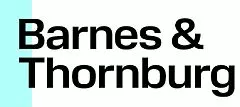- within Insurance and Real Estate and Construction topic(s)
- with readers working within the Insurance and Utilities industries
On Nov. 10, 2010, the United States EPA announced the availability of guidance and resources for determining the Best Available Control Technology (BACT) for greenhouse gas (GHG) emissions. This announcement comes just weeks before the effective date of EPA's Greenhouse Gas Tailoring Rule, which requires certain sources to install BACT for GHG after Jan. 2, 2011.
EPA's Greenhouse Gas Tailoring Rule was adopted by EPA in June 2010 and is set to become effective on Jan. 2, 2010. EPA's Greenhouse Gas Tailoring Rule creates New Source Review obligations under the PSD program of Clean Air Act for sources that emit carbon dioxide and other GHGs. PSD requires pre-construction permitting review before any new construction or modification at a source. To obtain a PSD permit, a source generally must install BACT and demonstrate that the construction or modification will not cause a violation of ambient air quality standards.
Under EPA's Greenhouse Gas Tailoring Rule, any new major stationary source that, after Jan. 2, 2011, would currently be subject to the PSD for air emissions other than greenhouse gas emissions and that has the potential to emit greater than 75,000 tons per year (tpy) of carbon dioxide equivalents (CO2e), will be required to obtain a PSD permit for greenhouse gases. In addition, any existing major stationary source seeking to make a modification that would cause a significant emissions increase of an NSR-regulated pollutant and a greenhouse gas emissions increase of 75,000 tpy CO2e or more would require PSD review for greenhouse gases. The applicability of EPA's Greenhouse Gas Tailoring Rule expands to cover more sources beginning in July 1, 2011, when all new sources that will emit or have the potential to emit over 100,000 tpy of CO2e and any existing major source seeking a modification that will increase greenhouse gas emissions by 75,000 tpy CO2e will require preconstruction PSD review. Additionally, all sources that emit or have the potential to emit over 100,000 tpy of CO2e would be required to obtain a Title V permit under the Clean Air Act.
The Nov. 10, 2010, EPA announcement introduces the availability of certain "GHG Permitting tools," including new EPA guidance entitled "PSD and Title V Permitting Guidance for Greenhouse Gases. " (EPA's "GHG Permitting Guidance"). The Guidance and other tools presented are designed to assist permit writers and permit applicants in implementing EPA's GHG Tailoring Rule, including BACT requirements. According to EPA, notice of the availability will be published in the federal register, and the public will have two weeks to comment on the statements in the guidance.
According to EPA, the GHG Permitting Guidance applies long-standing PSD principles to GHG emissions, including the five-step process for determining BACT, which includes: 1) identification of all available control technologies, 2) elimination of technically infeasible options; 3) evaluation and ranking of remaining available control technologies based on environmental effectiveness; 4) evaluation of cost-effectiveness of remaining available controls; and 5) selection of BACT. Under the GHG Permitting Guidance, BACT decisions for GHG permits, like all other BACT determinations, will continue to be a project-specific determination, and EPA states that it does not prescribe BACT for any specific project in the GHG Permitting Guidance. EPA emphasizes the importance of technologies that improve energy efficiency, and explores possible carbon sequestration technologies in the GHG Permitting Guidance, though EPA notes that sequestration is not likely to constitute BACT in most cases. The Guidance also notes that the use of biomass as an energy source may be considered in the BACT analysis for its environmental, energy, and economic benefits, which may include both a means of net reduction of GHG emissions by reducing the use of fossil fuels and a means to further the national goal of energy independence.
In addition to announcing the availability of GHG Permitting Guidance, EPA also announced the availability of whitepapers on GHG control technologies for certain industry sectors, the creation of a GHG mitigation database, and upgrades to the BACT/RACT/LAER database used to assist permit writers in determining what constitutes BACT for permitting actions.
The whitepapers provide basic information of GHG emissions and GHG control technologies that may be useful in the BACT determination process for several industry sectors, including:
- Energy production from Electric Generating Units;
- Energy production from Large Industrial/Commercial/Institutional Boilers,
- Pulp and Paper manufacturing;
- Cement manufacturing;
- Iron and Steel production;
- Petroleum Refineries; and
- Nitric Acid production.
The GHG Mitigation database, is designed to be a real-time resource for obtaining cost and performance data for existing and emerging GHG control technologies to assist both permit writers and permit applicants subject to GHG rules. Currently, the GHG Mitigation database contains information related to Electric Generating Units and Cement manufacturing, but it is anticipated that the database will be updated as further information becomes available.
Finally, EPA has also announced updates to its BACT/RACT/LAER Clearinghouse to provide information and permitting decisions about GHG control technologies required by state agencies as part of their permitting processes. The updated BACT/RACT/LAER Clearinghouse is available to permitting authorities and according to EPA, will include GHG control and test data.
The content of this article is intended to provide a general guide to the subject matter. Specialist advice should be sought about your specific circumstances.





